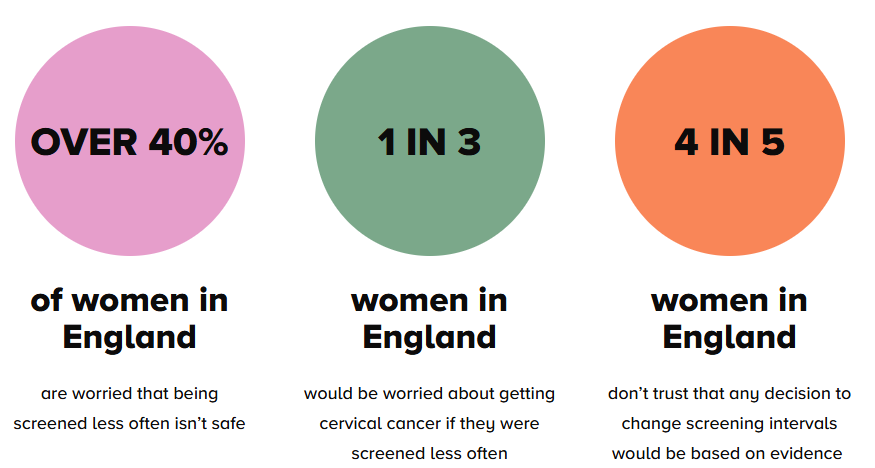It's #CervicalScreeningAwarenessWeek
Cervical screening (which used to be called a smear test) is a free health test on the NHS to help prevent cervical cancer.
It checks for a virus called high-risk Human Papillomavirus (HPV). If high-risk HPV is present, then the sample will be checked for cervical cell changes. It is not a test to diagnose cervical cancer. Cervical screening is estimated to save around 5000 lives a year in the UK.
During cervical screening, a healthcare professional will collect a sample of cells from the cervix. They will insert a lubricated speculum into the vagina. This will open up the vaginal walls. They then take a sample of cells by sweeping the cervix with a soft plastic brush. The sample will be sent off to a laboratory for testing.
Last week NHS England announced changes to the cervical screening programme, moving screening intervals for those who haven’t had high-risk HPV found recently from three to five years for all eligible ages. This brings England in line with Scotland and Wales, who were already screening every five years.
The recent announcement really exposed the importance of trust. Our new survey revealed the extent of the worry and anxiety around the recent changes to the cervical screening programme. There is a notable lack of trust in the level of protection that the new screening intervals will provide.
We know that you need reassurance, evidence and expert information about the change and around cervical screening, so you feel confident and empowered to attend, and trust in the programme. This Cervical Screening Awareness Week, we will be sharing information on cervical screening, the changes to the programme, and tips to make the appointment easier.
For more information Cervical Screening Awareness Week - The Eve Appeal


